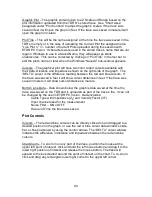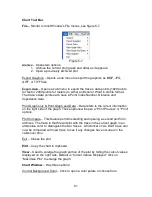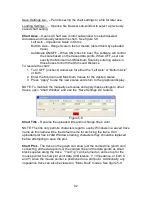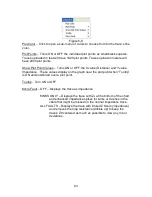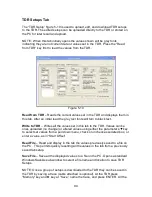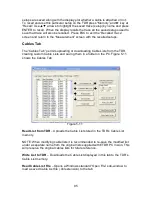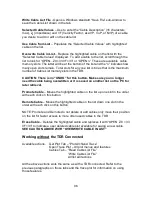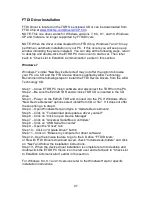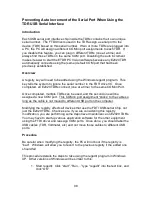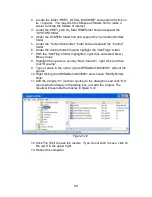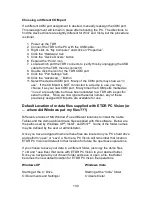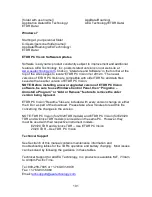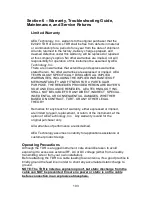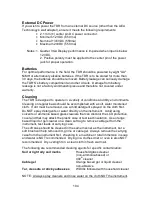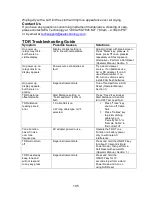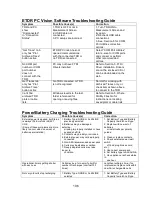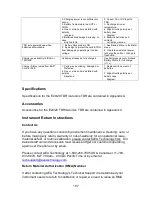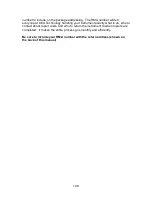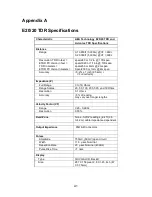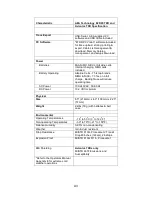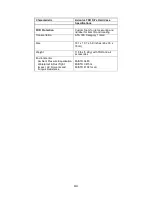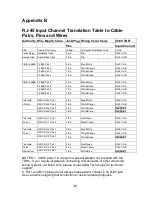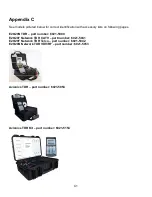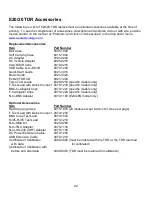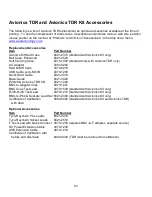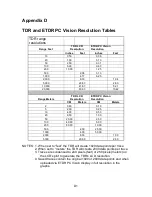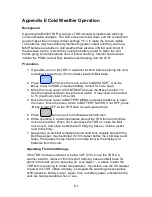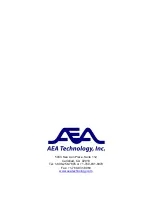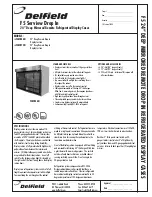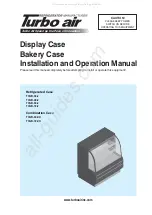
104
External DC Power
If you wish to power the TDR from an external DC source (other than the AEA
Technology’s wall adapter), ensure it meets the following requirements:
•
2.1 mm (+) center pin DC power connector.
•
Minimum 12 VDC (650 ma)
•
Nominal 13.6VDC (550ma)
•
Maximum 20VDC (550 ma)
Notes: 1. Quarter VGA Display performance is impaired when input is below
12VDC.
2. Positive polarity must be applied to the center pin of the power
jack for proper operation.
Batteries
For optimal performance in the field, the TDR should be powered by eight "AA"
NiMH or alternatively alkaline batteries. If the TDR is to be stored for more than
30 days, the batteries should be removed. Battery leakage can seriously damage
the TDR’S’s battery compartment and other circuits. Damage from battery
leakage is not a factory workmanship issue and therefore not covered under
warranty.
Cleaning
The TDR is designed to operate in a variety of conditions and dirty environments.
Cleaning on regular basis should be accomplished with a soft, water moistened
cloth. If dirt must be removed, use a mild detergent sprayed on the cloth first.
Do NOT spray detergents or water directly on the instrument. Avoid using
solvents or ammonia based glass cleaners that can discolor the LCD protective
cover and that may attack the plastic case or test lead insulation. Use orange
based liquid or gel cleaner on a clean soft rag to remove cable gel from the
instrument, test leads or carrying case.
The soft case should be cleaned in the same manner as the instrument, but a
soft brush will help remove dirt, grime or cable gel. Always remove the carrying
case from the instrument first. Washing in a machine or total immersion in soap
and water is NOT recommended. Drying in a clothes drier or oven is also NOT
recommended. Dry overnight on a clean cloth in fresh warm air.
The following are recommended cleaning agents for specific contamination:
Soil or light oily soil marks
Household glass cleaner
(non-ammonia based) or
409
®
cleaner
Cable gel
Orange based gel or liquid cleaner
non-abrasive
Tar, creosote or sticky adhesives
WD40
®
followed with household cleaner
NOTE: Always spray cleaners and rinse water on the cloth NOT the instrument.

